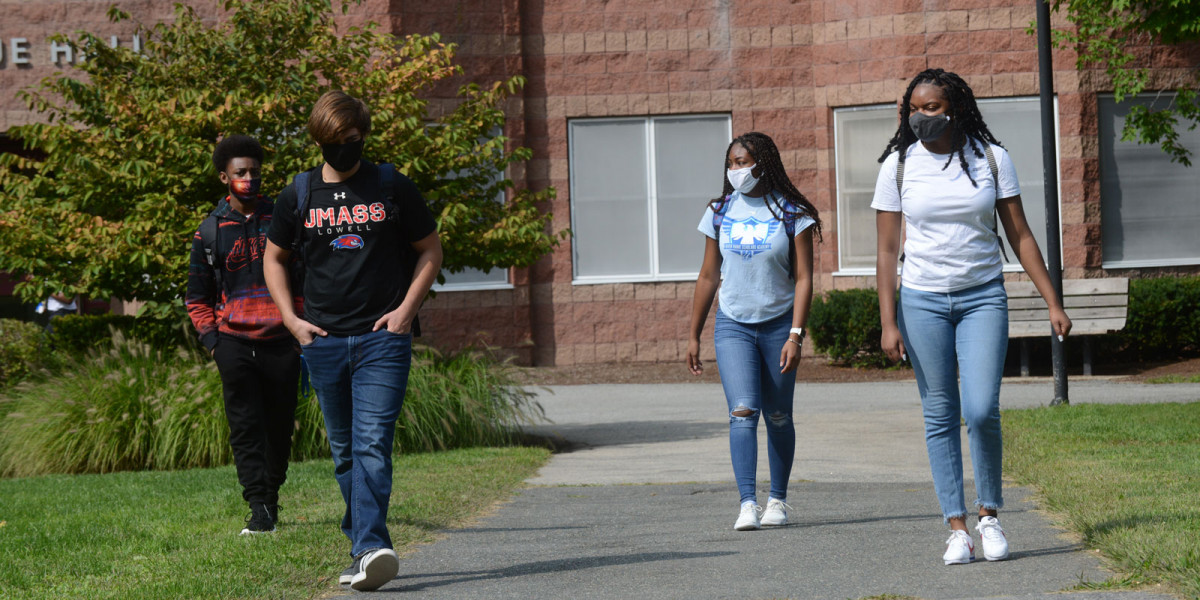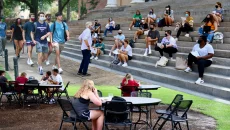(Photo courtesy of UMass Lowell) As of Feb. 28, face coverings are optional for all campus locations, including the Tsongas Center and the Inn and Conference Center. Face coverings will continue to be required in the Wellness Center and became optional on campus transportation on Saturday, March 12.
Alex Decato-Roed
Connector Editor
On Monday, Feb. 28, UMass Lowell ended its mask mandate for all campus locations, despite Lowell General Hospital ICU being at 100 percent capacity and Middlesex County remaining a COVID-19 hot spot. Students will now have returned from spring break–which means traveling and possibly contracting and spreading COVID-19.
There has not been an overall acceptance of the mandate’s removal, as most students and faculty continue to wear masks on campus. Although numbers have plummeted from the recent Omicron surge, the decision seems to be placed on student weariness to the pandemic rather than personal health and safety.
Currently, Lowell’s vaccination rate is 70 percent, and 60 percent of the world is vaccinated; there are possible risks for mutations, and some areas, such as Hong Kong, are experiencing another surge of Omicron. In addition, lab experiments in Japan have found that the new sub-variant called BA.2 can spread as quickly as Omicron and cause severe illness, similarly to Delta.
Although college-aged students are at a lower risk for severe disease, faculty, older students, those with underlying health conditions and/or those with children under five years old at home are now unable to mitigate the risks associated with a global pandemic. Scientists still have little understanding of long-term COVID-19 effects. “This is a condition that we don’t even have an agreed-upon name for yet, and we don’t have any understanding really of what’s going on down at a chemical level,” said Greg Vanichkachorn, medical director of Mayo Clinic’s COVID-19 Activity Rehabilitation Program.
Over 100 students and faculty have signed a petition to protest the lifted mandate. The petition says, “This decision puts our community members at risk and we urge you to reconsider. The well-being of disabled, chronically ill, or otherwise at-risk people, especially with the long-term effects of COVID infection not yet fully understood, is never an acceptable sacrifice for getting back to normal.”
In a university-wide email, Chancellor Jacqueline Moloney said, “In addition to public health guidance, this decision has been informed by discussions within the campus community as well as the mitigation steps we have taken during the pandemic.” Yet, this decision seems to have surprised the whole campus community, suggesting the university didn’t discuss the decision with students and university staff beforehand.
A recent op-ed in the Boston Globe co-authored by two associate professors at UMass Lowell may have helped spur the university’s choice. The piece says, “We are dismayed that much-needed normalcy is not on the horizon for our students. Early in the pandemic, we made tradeoffs that sacrificed the mental well-being of young people; now is the time to bring those tradeoffs back into balance.”
Wearing a mask is not the most significant inconvenience; arguably, lowering tuition rates, removing student debt and reducing the price of textbooks and housing would do far more for students’ mental health than dropping the mandate.
Currently, students or staff can opt out of on-campus classes by special permission deeming them vulnerable. Therefore, if a student or faculty member has family or children at risk, they may be unable to gain approval.
During the pandemic, discussion included ventilation in old buildings, begging the question of how this has been addressed at the older buildings on campus. The EPA says, “Particles from an infected person can move throughout an entire room or indoor space. The particles can also linger in the air after a person has left the room–they can remain airborne for hours in some cases.”
Students and faculty are exposed to the exhalation of previous classes that have met in the classroom. Since most classes last over an hour, surgical masks are ineffective, with the CDC saying they offer only 30 minutes of protection in an infected room. Students and faculty uncomfortable with the decision will need to use N95s—which offer two and a half hours of protection but can be difficult and expensive to obtain.
The email went on to say, “While face coverings are no longer required, the obligation to treat with respect and kindness those whose choices may differ from ours is unwavering.” The problem does not lie in respecting others’ choice to continue wearing masks, but rather after two years of adjustments to protect each other, what message removing mask mandates sends to those who are immunocompromised, disabled or otherwise vulnerable.




